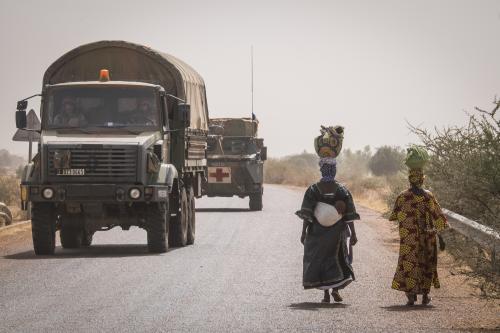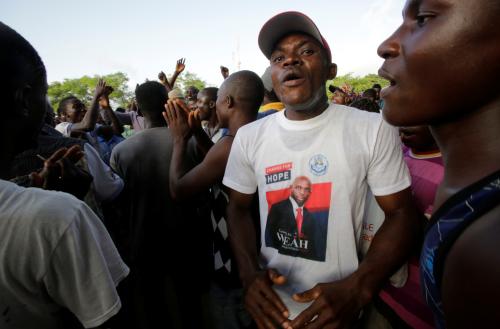The relationship between the US and India is described by proponents in both countries as a “natural alliance”. There are many reasons why this newfound partnership between the world’s two largest democracies seems both powerful and inevitable. However, its contours have yet to be fully defined.
While there is still enormous room for improvement, ties are unlikely to regress to the days of alternating hostility and apathy, when India regarded the US as part of its own “axis of evil” along with China and Pakistan, while Washington sidelined India, stopping only to lecture it on non-proliferation matters.
This new relationship would never have happened had India not been forced to airlift gold secretly to London to maintain a wobbly credit rating 16 years ago. Meaningful economic reforms followed swiftly, which included more liberal trade, investment and industrial policies. Overall growth has now averaged a healthy 8 per cent over the past three years, with growth in some states comparable to the coastal provinces of China. Even communist-led West Bengal seeks American investment. This revolution means that India is much richer, and while it still contains 25 per cent of the world’s poorest people, it also contains an increasing number of its wealthiest. India’s recent economic performance has transformed its image from a large, exotic basket case, into a state rising along many dimensions. India is now usually paired with China, not Pakistan, and it has become an important operator in the global competition for energy, just as it could evolve into the world’s second biggest polluter after China.
Six other components of the US-India relationship now make it special. The yet-to-be consummated civilian nuclear deal would not only enhance India’s energy production, but it could bring the country into the ranks of states actively concerned about non-proliferation. Even if the deal collapses, both sides are eager to ensure that the overall relationship does not sour.
The nearly 2m Americans of Indian origin are not only the wealthiest of the new immigrant groups; they are also becoming a factor in US domestic politics. Indian culture has taken root in the US, and to “eat Indian” or see a film with an Indian theme is no longer an exotic adventure.
A byproduct of economic liberalisation has been the creation of a substantial lobby of US companies that do business in India. In 2005, Boeing sold commercial aircraft worth $6.8bn to Air India, General Electric outsources 30 per cent of its research to India, and other high technology companies, such as Microsoft, have huge India operations well beyond the humble call-centre.
The flow operates the other way too. Indian call-centre companies now operate in West Virginia, Indian energy strategists are eyeing the coal fields of Montana to meet a shortfall in clean coal, and Indian software companies, notably Tata Consultants, have become big operators in the American high-tech service industry.
Both countries are concerned about the rise of Islamic extremism and terror, although there are few opportunities for co-operation on this front. Nor is there much of an opportunity for co-operation on India’s domestic instability – 28 per cent of Indian districts are affected by a violent Maoist insurgency.
While improvements in the relationship have been made along so many lines, US-India ties have so far failed to deliver in two main areas. One is in fostering a second green revolution in India. The second is in reforming higher education. Now, 80,000 Indian students are in the US in large part because Indian universities are an academic miasma.
Despite warming economic and cultural trends, strategic convergence remains far from certain. US and Indian officials have temporarily removed discussions of Pakistan from their agendas. For the US it means treating both Pakistan and India as friends and refraining from serious engagement on Kashmir. This policy works as long as India and Pakistan are not in a state of conflict, something that looks increasingly doubtful, given Pakistan’s instability and the Indian army’s new offensive doctrines.
There is closer alignment on China. Both countries see their relationship as a hedge against the rise of a potentially expansionist and hostile China and have been at pains to avoid provocations, whether over human rights, trade, Taiwan, or other issues sensitive to Beijing. However, India regularly engages in military exercises with the US and other big states surrounding China, challenges China’s position in Burma, and sees the US as potentially providing political support and military technology should relations with China go sour. China, for its part, hedges its relationship with both the US and India: we live in an era of hedgemonism.
Two developments could affect a rapprochement that began in the last years of the Clinton administration. First, another India-Pakistan crisis might lead to unfulfilled expectations regarding US support. This would lead to renewed disillusionment with the US. Second, if the US-Indian nuclear deal is not consummated, India will again contemplate the resumption of nuclear testing and present the world with new proliferation “facts on the ground”.
If by then a Democrat occupies the White House, there could be an abrupt end to the Bush administration’s policy of facilitating India’s rise as a world power.



Commentary
Op-edIndia: No Longer a Large, Exotic Basket Case
August 15, 2007